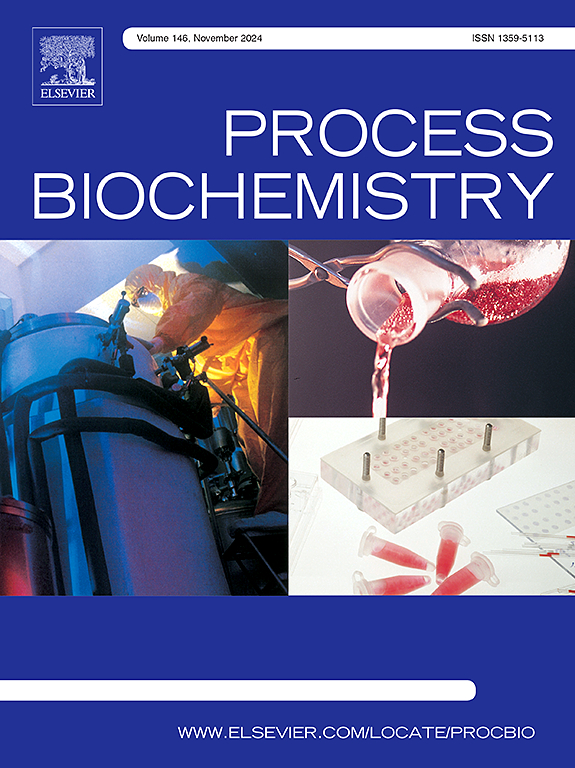Refining measurement techniques for N2H4, NH2OH, and NH4+-N in nitrogen-rich environments: Mitigating interference for accurate detection
IF 4
3区 生物学
Q2 BIOCHEMISTRY & MOLECULAR BIOLOGY
引用次数: 0
Abstract
In biological studies, several nitrogenous compounds interfere with each other’s measurements, which may result in unreliable results and misinterpretation. In this context, this study aims to refine the analytical techniques for N2H4, NH2OH, and NH4+-N by eliminating interferences to obtain accurate data from the anammox system as a case study. Results indicated that NO2--N interferes with N2H4 and NH2OH measurements, while N2H4 and NH2OH interfere with NH4+-N measurements. In N2H4 determination, different NO2--N levels resulted in different utilization of sulfamic acid (SA) in terms of volume and concentration. The samples containing ≤ 2 mg/L NO2--N were pretreated with 400 µL 0.5 % SA to prevent NO2--N interference, while 10 % SA is required for NO2--N concentrations between 27.25 mg/L and 46.62 mg/L. The 10 % SA treatment also significantly mitigated NH2OH degradation in solutions, ensuring precise and steady results even in the presence of NO2--N. Adding 0.1 g of KIO3 to 50 mL of samples containing N2H4 (≤ 10 mg/L) produced findings most comparable to the control group in NH4+-N tests. Furthermore, without any pretreatment, it is possible to measure NH4+-N accurately if the NH2OH concentration is ≤ 0.01 mM. Overall, this study offers insightful data for further biological research in nitrogen-rich environments.
改进富氮环境中N2H4、NH2OH和NH4+-N的测量技术:减轻干扰,实现准确检测
在生物学研究中,几种含氮化合物相互干扰测量,可能导致不可靠的结果和误解。在此背景下,本研究旨在完善N2H4、NH2OH和NH4+-N的分析技术,消除干扰,以厌氧氨氧化系统为例,获得准确的数据。结果表明,NO2—N干扰N2H4和NH2OH的测定,而N2H4和NH2OH干扰NH4+-N的测定。在N2H4测定中,不同的NO2—N水平导致对氨基磺酸(SA)的利用在体积和浓度上存在差异。对于NO2—N浓度≤ 2 mg/L的样品,采用400 µL 0.5 % SA预处理,以防止NO2—N干扰,而对于NO2—N浓度在27.25 mg/L ~ 46.62 mg/L之间的样品,则需要10 % SA预处理。10 % SA处理也显著减轻了溶液中NH2OH的降解,即使在NO2——N存在的情况下也能确保精确和稳定的结果。在含有N2H4(≤10 mg/L)的50 mL样品中加入0.1 g KIO3,在NH4+-N测试中产生的结果与对照组最相似。此外,如果NH2OH浓度≤ 0.01 mM,则无需任何预处理即可准确测量NH4+-N。总的来说,这项研究为富氮环境下的进一步生物学研究提供了有见地的数据。
本文章由计算机程序翻译,如有差异,请以英文原文为准。
求助全文
约1分钟内获得全文
求助全文
来源期刊

Process Biochemistry
生物-工程:化工
CiteScore
8.30
自引率
4.50%
发文量
374
审稿时长
53 days
期刊介绍:
Process Biochemistry is an application-orientated research journal devoted to reporting advances with originality and novelty, in the science and technology of the processes involving bioactive molecules and living organisms. These processes concern the production of useful metabolites or materials, or the removal of toxic compounds using tools and methods of current biology and engineering. Its main areas of interest include novel bioprocesses and enabling technologies (such as nanobiotechnology, tissue engineering, directed evolution, metabolic engineering, systems biology, and synthetic biology) applicable in food (nutraceutical), healthcare (medical, pharmaceutical, cosmetic), energy (biofuels), environmental, and biorefinery industries and their underlying biological and engineering principles.
 求助内容:
求助内容: 应助结果提醒方式:
应助结果提醒方式:


